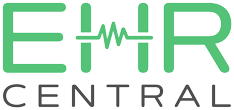Credentialing in the Age of Telemedicine: Addressing Challenges and Ensuring Compliance
Telemedicine has revolutionized healthcare by breaking down geographical barriers and providing patients with greater access to medical services. However, this shift also brings new challenges, particularly in the area of credentialing. Ensuring that

healthcare providers are properly credentialed is crucial for maintaining quality and compliance in a telehealth environment. Here, we explore the challenges and propose strategies for addressing them.
Credentialing is the process of verifying the qualifications and professional background of healthcare providers. It ensures that doctors, nurses, and other healthcare professionals meet the necessary standards to provide safe and effective care. In the context of telemedicine, credentialing is even more critical because:
- Patient Safety: Ensures that patients receive care from qualified professionals.
- Regulatory Compliance: Meets legal and regulatory requirements, which can vary by state and country.
- Reputation: Protects the reputation of healthcare organizations by ensuring high standards of care.
Challenges in Telemedicine Credentialing
- Variability in State Regulations:
- Each state has its regulations regarding telemedicine, making it complex for healthcare providers to comply with multiple jurisdictions.
- Licensure requirements can vary significantly, leading to potential delays and increased administrative burden.
- Technological Barriers:
- Integrating credentialing processes with telemedicine platforms can be technologically challenging.
- Ensuring that telehealth systems are secure and comply with data privacy laws is essential.
- Verification Process:
- Traditional credentialing methods may not be sufficient for telemedicine providers, especially those offering cross-border services.
- There is a need for a more streamlined and efficient verification process that can handle the scale and speed of telehealth services.
- Maintaining Up-to-Date Credentials:
- Continuous monitoring and updating of credentials are necessary to ensure ongoing compliance.
- This requires robust systems and processes to track changes in provider status, licensure renewals, and any disciplinary actions.
How EHRCentral enhances your healthcare practice?
Strategies for Ensuring Compliance
- Standardizing Credentialing Procedures:
- Develop standardized credentialing procedures that can be adapted across different states and regions.
- Use telemedicine-specific criteria to evaluate the qualifications of healthcare providers.
- Leveraging Technology:
- Implement advanced credentialing software that integrates with telehealth platforms.
- Use blockchain technology for secure and transparent credential verification.
- Collaboration with Regulatory Bodies:
- Work closely with state and federal regulatory bodies to harmonize credentialing requirements.
- Advocate for uniform telemedicine regulations to reduce complexity and enhance compliance.
- Regular Audits and Updates:
- Conduct regular audits of credentialing processes to ensure compliance with current regulations.
- Update credentialing protocols in response to changes in laws and industry standards.
- Education and Training:
- Provide ongoing education and training for healthcare providers on the importance of credentialing and compliance.
- Ensure that staff involved in credentialing are well-trained in the latest technologies and regulations.
Conclusion
Credentialing in the age of telemedicine presents unique challenges, but with the right strategies and technologies, healthcare organizations can ensure compliance and maintain high standards of care. By standardizing procedures, leveraging technology, collaborating with regulatory bodies, conducting regular audits, and providing continuous education, the credentialing process can be streamlined and more effective, ultimately benefiting both providers and patients in the telemedicine landscape.





